Optimizing Laser Phototherapy
Because this field is so young, there are still huge gaps in our knowledge base, both in the physical properties of the individual lasers, as well as in the biological implications thereof. There is now, however, a well-established research community dedicated to the general study and optimization of the biological effects of laser phototherapy.
OPEN FILEMitochondrial Mechanisms of Photobiomodulation in Context of New Data About Multiple Roles of ATP
It is generally accepted that the mitochondria are the initial site of light action in cells, and cytochrome c oxidase (the terminal enzyme of the mitochondrial respiratory chain) is the responsible molecule.2–8 Mixed-valence copper components of cytochrome c oxidase, CuA and CuB, are believed to be the photoacceptors.5,9,10 The same photoacceptor molecule for different cellular responses can explain, at least partly, the versatility of low-power laser effects.
OPEN FILEEvaluation of Inflammatory Biomarkers Associated with Oxidative Stress and Histological Assessment of Low-Level Laser Therapy in Experimental Myopathy
LLLT caused significant changes in inflammatory biomarkers and oxidative stress: decreased levels of fibrinogen, L-citrulline, and SOD as opposed to the increase of NO in rats with experimental myopathies and significant muscle recovery.
OPEN FILEEffect of Photobiomodulation on Transforming Growth Factor-b1, Platelet-Derived Growth Factor-BB, and Interleukin-8 Release in Palatal Wounds After Free Gingival Graft Harvesting: A Randomized Clinical Study
Observed increases in PWF TGF-b1, PDGF-BB, and IL-8 levels suggest that PBM may accelerate wound healing by stimulating production of selected mediators.
OPEN FILELow-Level Laser Therapy Activates NF-kB via Generation of Reactive Oxygen Species in Mouse Embryonic Fibroblasts
We conclude that LLLT not only enhances mitochondrial respiration, but also activates the redox-sensitive NFkB signaling via generation of ROS. Expression of anti-apoptosis and pro-survival genes responsive to NFkB could explain many clinical effects of LLLT.
OPEN FILEIrradiation at 830nm Stimulates Nitric Oxide Production and Inhibits Pro-Inflammatory Cytokines in Diabetic Wounded Fibroblast Cells
Results show that irradiation of diabetic wounded fibroblast cells at 830nm with 5 J/cm2 has a positive effect on wound healing in vitro. There was a decrease in pro-inflammatory cytokines (IL-1b and TNF-a) and irradiation stimulated the release of ROS and NO due to what appears to be direct photochemical processes.
OPEN FILEMechanisms of Low Level Light Therapy.
The results of these biochemical and cellular changes in animals and patients include such benefits as increased healing in chronic wounds, improvements in sports injuries and carpal tunnel syndrome, pain reduction in arthritis and neuropathies, and amelioration of damage after heart attacks, stroke, nerve injury and retinal toxicity.
OPEN FILELaser Photobiomodulation: Models and Mechanisms
This review is divided into four sections as follows: (1) Current understanding of photobiomodulation (PBM); (2) Critical parameters for photobiomodulation; (3) The nexus of inflammation and healing; and (4) Novel PBM mechanism involving LLLT activation of LTGF-?.
OPEN FILEProposed Mechanisms of Photobiomodulation or Low-Level Light Therapy
Photobiomodulation (PBM) also known as low-level laser (or light) therapy (LLLT), has been known for almost 50 years but still has not gained widespread acceptance, largely due to uncertainty about the molecular, cellular, and tissular mechanisms of action. However, in recent years, much knowledge has been gained in this area, which will be summarized in this review.
OPEN FILEMechanisms of action for light therapy: a review of molecular interactions
The aim of this review is to summarize the current research into the biochemical mechanisms of light therapy in order to better direct future studies. The implication of cytochrome c oxidase as the photoacceptor modulating light therapy is reviewed, as are the predominant hypotheses of the biochemical pathways involved in the stimulation of wound healing, cellular proliferation, production of transcription factors and other reported stimulatory effects.
OPEN FILE